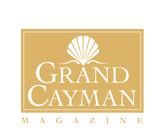After 40 years of extraordinary economic growth and prosperity, Cayman is facing a new challenge to its development. Cayman is at a stage where it needs to reconsider the very foundations – technological and social – upon which its economy is built.
Forty years ago, the time horizon for those laying the foundations for growth was for a generation or more into the future. Today, the time horizon appears to be much shorter and more focused on current, personal benefits than on benefits to future generations. In many ways, the tension between the present and the future has presented a difficult dilemma for Cayman’s decision makers – public and private. However, there may be lessons in Cayman’s history since 1970 that can shed some light on the opportunities Cayman has at hand.
Technological Foundations
At the most basic level, Cayman is an importer of goods and an exporter of services.
On the surface, the imported goods are easily recognized. However, those goods that are unseen – and therefore underestimated – are the technological foundations that support all the activities that businesses and families have come to enjoy. It will be the technological foundations of Cayman that will determine its future.
Even when the significance of technologies is recognized, what is often overlooked are the fundamental differences between technologies of the past and those that have arrived recently.
Older technologies usually require large volumes of production to make them economically viable. Large-volume production was usually associated with large, mechanical, technically-complex and expensive processes. For instance, it was only through building huge, expensive manufacturing facilities that cars, or even cellphones, could be made affordable to the masses.
More importantly for Cayman, had it not been for the development of commercial aircraft and cruise ships, tourism could not have developed as it has over the last four decades.
Even more fundamental to Cayman’s economic success has been the development of telecommunication and computing technologies. Without the ability to communicate internationally, there would be no finance industry in Cayman.

Recent Medical Innovations
In medicine, the latest technologies – especially imaging breakthroughs that facilitate diagnoses and provide support for minimally-invasive surgeries – were unavailable to small hospitals just a decade ago. Traditionally, the latest medical technologies have only been viable in large, urban hospitals (mostly in affluent countries).
Through technological innovations in computerization and miniaturization, the most sophisticated equipment is now becoming practical for use in smaller, far-flung facilities.
Dr. Shetty’s “Health City Cayman Islands” is a case in point. This facility would not be possible in Cayman had it not been for recent technological innovations that made the state-of-the-art technologies – especially in cardiac and orthopedic surgeries – scalable and viable for lower-volume institutions.
Electricity and Water
Public infrastructure technologies worldwide have, likewise, required high volumes to be economically viable. For instance, consider the generation and distribution of electricity and water. Both have required large processing facilities and distribution networks to deliver affordable electricity and drinkable water.
 Cayman has long had reliable, accessible electricity and water. The production of each, however, is reliant on oil which makes them expensive and their future cost to consumers unpredictable. The high capital costs of production and distribution and the relatively small number of customers also contributes to their high costs in Cayman.
Cayman has long had reliable, accessible electricity and water. The production of each, however, is reliant on oil which makes them expensive and their future cost to consumers unpredictable. The high capital costs of production and distribution and the relatively small number of customers also contributes to their high costs in Cayman.
Today, we are seeing technological advances in the fields of energy and water that can address the challenges Cayman is facing. These new technologies do not require huge infrastructures, massive organizations, or high-volume output. They are perfectly suited to the circumstances Cayman finds itself in.
Two are of particular interest. One is the use of organic matter to generate electricity through anaerobic digestion, and the other, the use of wind turbines to produce drinking water from the air. Neither requires huge capital investments, nor large-scale production to make it economically suitable for Cayman.
A New Source of Energy
Anaerobic digestion systems use common plant and other organic matter that are accessible and inexpensive. These ingredients are fed into a contained structure that promotes the breaking down of the organic matter and captures the gases that are emitted.
The gases, in turn, fuel a generator that produces electricity 24 hours a day, every day. The electricity generated can be fed into an electricity transmission grid to augment the production of high volume, expensive generating stations.
The organic matter that is left over after the process is complete remains rich in nutrients and can be used, or sold, as fertilizer.
An anaerobic digester, costing around CI$1.75 million, could produce about 125 kilowatt hours of electricity at an attractive cost that is not influenced by the price of oil. It could, however, only augment the existing system and not replace it.
Water from Thin Air
Another new technology that has potential for Cayman is the production of drinking water, literally, from thin air. The Canadian business, “Rainmaker Worldwide”, uses wind turbines to produce water from the air – no source of water is required; just air and wind. The process requires no chemicals or electricity, and has proven to produce more than 1,500 imperial gallons of water a day at a test site that has climatic conditions similar to Cayman.
An investment of as little as CI$350,000 for Rainmaker Worldwide’s wind-to-water system could produce as much as 27,000 imperial gallons of clean water per day, at a cost per gallon substantially below that currently being paid.
Meeting the Challenge
As much as these emerging, small-scale innovations are becoming more economically viable for Cayman, there is one ingredient that must be added to the mix to make them a reality. Cayman must become receptive to allowing the technologies into the country. Without that, emerging technologies can have no impact.
Cayman is an internationally recognized innovator in the “social institutions” that make it a world leader in finance. Cayman continues to lead the way in establishing policies, law, and procedures that facilitate growth in the sector.
Embracing the new foundational technologies that are becoming available could set the stage for Cayman’s next wave of economic growth. This would make the generation that began laying the foundation for its current success 40 years ago proud.
Dr. Phillips, an internationally renowned economist, has served on the faculty of the University College of the Cayman Islands. He currently practices his craft in Ontario, Canada.






















